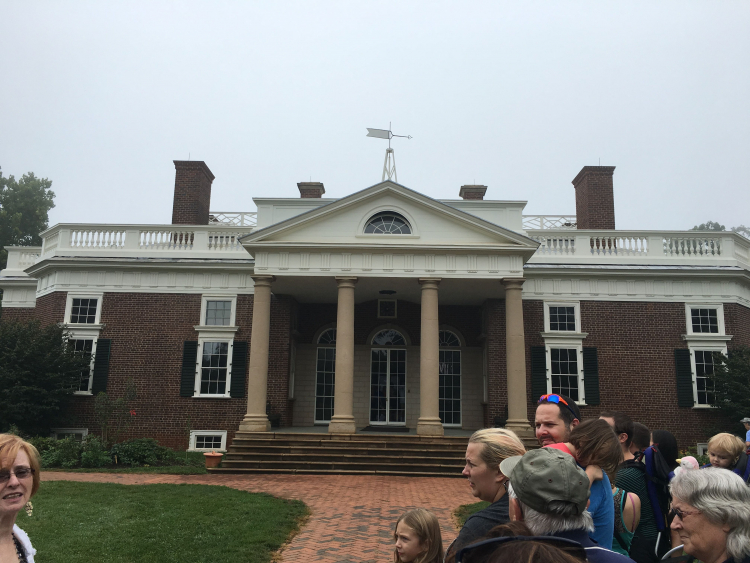You Mad? White Fragility and Relearning the History of Slavery

The other day, I stumbled across an article about how visitors of Thomas Jefferson’s Monticello estate in Virginia were not satisfied with the updated version of the tours. Not because the tours weren’t informative, but because they were too informative. About slavery. About Jefferson as a slave owner, despite writing in the Declaration of Independence that “all men were created equal.” The visitors did not appreciate the focus on the plight of the enslaved people who toiled on the plantation. What visitors wanted instead was the continuation of the fantasy of the Antebellum South, to marvel at the brilliance of Jefferson and all his many great ideas, and to pretend that their ancestors hadn’t brutally enslaved people.
I grew up in Virginia. My elementary school was named after Thomas Jefferson. As a person of color, this article reminded me of my experience when I visited Monticello in 2016. I had a desire to visit the historic site before moving to Paris because I wasn’t sure if I would return to the US and I wanted to visit some American historical sites before I left.
At the time, only one of the tours reflected the notable change. It’s important to note that the tour guide used the term “enslaved people” instead of “slaves.” Slave is a noun. A person, place, or thing. Slaves were considered property. “Enslaved,” on the other hand, is an adjective. It describes a person or a condition that a person is in.
Photo Credit: Monique CallenderI remember the tour guide describing the life of a woman who was considered valuable for all her hard work. He gave us a dollar amount of how much someone might pay for her in her prime. Then he asked us how much we thought she was worth when she was no longer able to work. One man shouted out, “One dollar!” The rest of the group stayed silent.
The tour guide responded that he had just asked us to put a dollar amount on the life of a person.
Perhaps the guy who shouted “one dollar” so quickly went home and reflected upon how he was able to come to that conclusion so quickly. It’s more likely he went online and wrote a review complaining that Monticello has become “too politically correct,” or that the tour guides spent too much time talking about Jefferson as a slave owner and not enough time talking about his achievements.
Much like the ones that can currently be found on trip advisor.
Photo Credit: Monique Callender (screen shot from Travelocity.com)
It seems like a no-brainer: slavery equals bad. Unfortunately, many people don’t see it that way because they were taught things that minimized the horrors of slavery. It turns out the way history is taught matters.
A study was done in 2017 by the Southern Poverty Law Center called “Teaching Hard History” found that:
- We teach slavery without context.
- We teach about American enslavement of Africans as an exclusively southern institution.
- We rarely connect slavery to the ideology that grew up to sustain and protect it (white supremacy).
- We tend to center on the white experience when we teach about slavery.
These findings are consistent with another article from the Washington Post that sums up over a hundred interviews with teachers, students, administrators, and historians from around the country. Among these experiences are mock slave auctions: the idea that Africans brought to the US were “better off,” and the idea that some enslaved people loved their masters and vice versa.
Many people say they don’t remember slavery being covered at all let alone in-depth. Most said that the discussion of slavery was usually limited to a viewing of “Roots,” the 1977 miniseries based on the novel by Alex Haley.
I, too, remember “Roots” being shown in my high school history class. Unfortunately, we were behind on the syllabus so our teacher only showed us excerpts before moving on. As a person of color, I had no choice but to eventually learn the history that was left out of my high school education on my own. I’m not sure if the same can be said for my (majority) white classmates.
The complaints of these plantation visitors are not new. In my life, the people who complain about race the most are the white people who don’t understand the history and brutality of slavery. It is normal to be uncomfortable with the idea that your ancestors enslaved other human beings. It is extremely troubling to look back on one’s life and realize that they have unintentionally spent the majority of the time believing in the lie of white supremacy.
However, black Americans need and deserve to have their history recognized and respected.
Thankfully, it seems that getting the facts straight about American history is trending. Monticello is not the only historical location that has changed their narratives. Other plantations such as James Madison’s Montpelier, McLeod in Charleston, S.C, and other historical sites are updating their narratives too.
The reception is not all negative. If you look up Monticello on Trip Advisor, the majority of comments on the new talking points of the tours is overwhelmingly positive. Let’s hope this trend continues.
Photo Credit: Monique CallenderIf you or someone you know is ignorant of Black American history, I implore you to do some research for yourself.










